Fifteen years ago, the first iPhone went on sale and crowds filled the Apple Store, a sight that has lasted until the current iPhone launch.

▲ Image from: wired
Apple has always had this magic of gathering crowds outside Apple Stores around the world when new products go on sale. They even [stay] outside the Apple Store (https://www.flickr.com/photos/gruber/662408737/in/photolist-21x2pn-21x23i-21x1PH/) a day early to get a head start.
On the morning of June 29, 2007, many Apple executives went to Apple Stores in different cities to witness this historic moment.
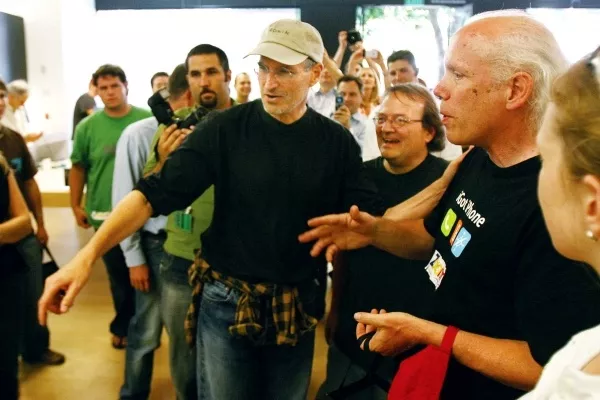
▲ Steve Jobs at the iPhone's first sale day Photo from: paloaltoonline
Phil Schiller (VP of Global Marketing) went to Chicago, Jony Ive (Chief Designer) and the design team went to San Francisco, and Steve Jobs showed up at the Palo Alto Apple Store, just a mile and a half from his home news/article-2051060/Steve-Jobs-life-celebrated-Apple-stores-close-America.html).
Jobs was joined by former Mac team spirits like co-founder Steve Wozniak and Bill Atkinson.
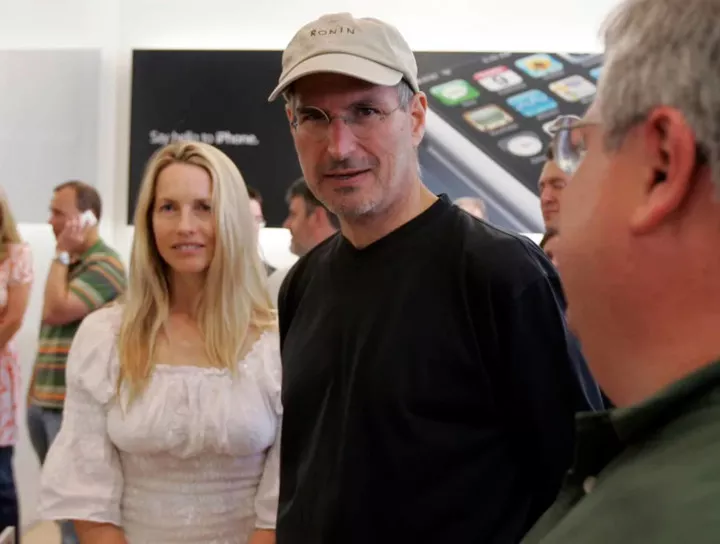
▲ Steve Jobs at iPhone launch day Photo via: Yahoo!
The iPhone is undoubtedly the most important product in Apple's history, and it's rare to see Apple executives, or the creators of the iPhone, all together at the Apple Store, along with many other users.
No one believes the iPhone will work
There was a six-month gap between its release in January 2007 and its launch in late June 2007.

The iPhone was officially launched at MacWorld 2007 Photo from: Mashable
It wasn't just the development team that was suffering to meet the schedule during this time, outside analysts and senior media weren't idle either, though they weren't cheering Apple on or giving it credit.
Rather, it's a complete move to the opposite side of the spectrum, a collective bearishness.
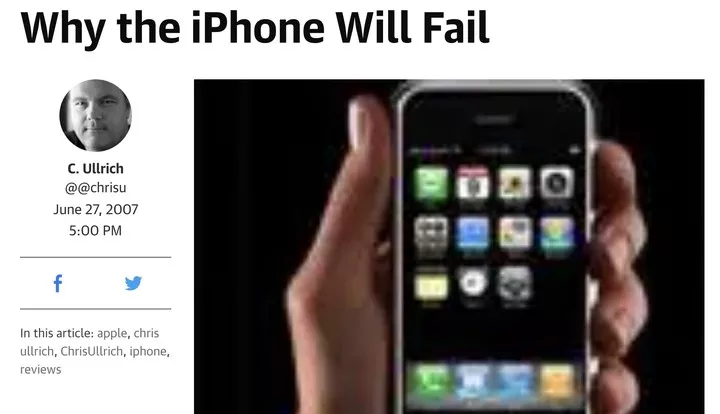
Microsoft CEO, RIM CEO, Bloomberg, BusinessWeek, etc. all think the iPhone simply can't win, and is an overkill in front of BlackBerry, Nokia, and Motorola.
The reason for this lament is essentially the form and logic of the first iPhone.

In the fourth quarter of 2006, a total of 22 million smartphones were sold worldwide, largely split between Nokia, BlackBerry, Motorola and Palm.
At the time, their phones were basically a rectangular box with a screen on the top half and buttons on the bottom half. And, at that time, people had already decided that this was what a phone looked like, and that one-way access to information from the screen and input on the keyboard was the way people were used to interacting.
Before the iPhone came along, no one probably knew that you could flip through photos like a book, pinch to shrink pictures with your fingers, and tap an avatar to make a call directly.
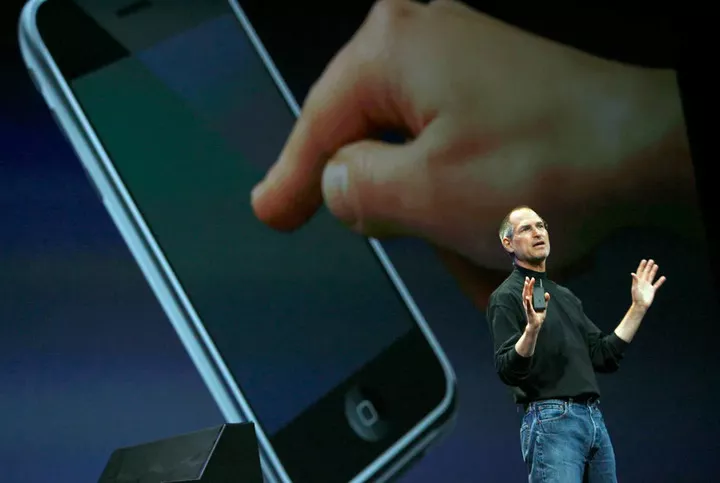
▲ Image from: vox
At the January 2007 MacWorld conference, after Jobs clicked on Ive's avatar and spoke to Ive in the audience at the [MacWorld]() conference in January 2007, many compared the call to the Bell call from a century ago, a snapshot of the era.
But it's interesting to note that when Jobs introduced the iPhone to the world, it was still an unfinished product with significant problems with both the hardware and the iPhone OS.
In order to make the Jobs demo go smoothly, the iPhone development team has developed a strict process, such as playing only part of a song or video, sending emails before going online, etc.

▲ Crowds waiting to buy iPhones Photo from: wired
And in the less than six months that followed, even with all the industry opposition, on June 29th, Apple still solved many of the problems and delivered as scheduled.
Unexpectedly, the iPhone faced the biggest problem of being too popular, and the AT&T network nearly crashed due to excessive data access.
Richard Sprague, then senior marketing director at Microsoft, was certain that the iPhone wouldn't sell more than 100,000 units by 2008. In reality, however, the first iPhone sold more than 1 million units in just 74 days.

▲ Steve Ballmer image from: gifcen
Steve Ballmer, then CEO of Microsoft, in an April 2007 USA Today interview, similarly argued that the iPhone had no chance of doing well in the marketplace.
Fifteen years later, the iPhone alone accounts for 40 percent of the global mobile phone market, contributes nearly 60 percent of Apple's revenue, and there are already more than 1 billion iPhones in the world.
iPhone was born, actually for the music business
It's only been two years since the idea of building a phone was conceived and finally brought to market. And this two-year development process is almost a microcosm of Apple's thirty years of technology accumulation.
In 2004, the iPod was on a roll, almost single-handedly disrupting the entire traditional record industry.
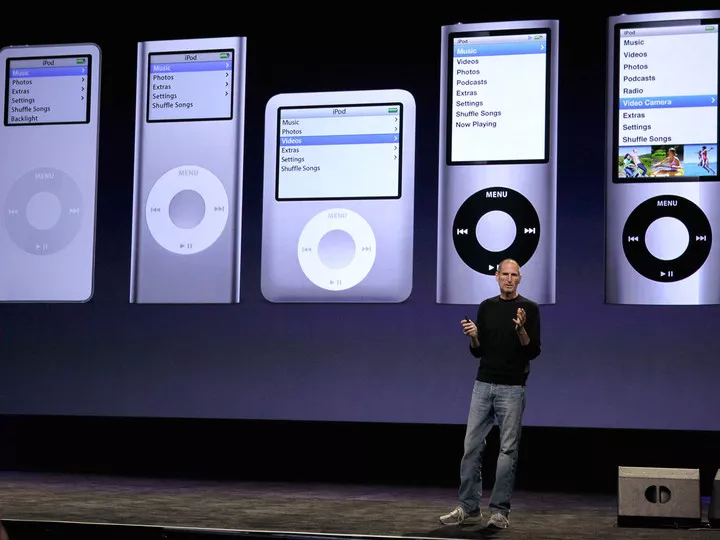
▲ iPods: Photo by: musictech
But instead of getting carried away by the victory, Apple VP of marketing Greg Joswiak is monitoring other phone makers to see if they're ready to integrate music players into their phones and thus threaten the iPod's status.
Rather than wait, Apple didn't want to build a phone because Jobs thought there were too many rules and regulations for carriers to build and design the way they wanted, but it didn't want to give up that part of the music business as it watched the phone market grow.
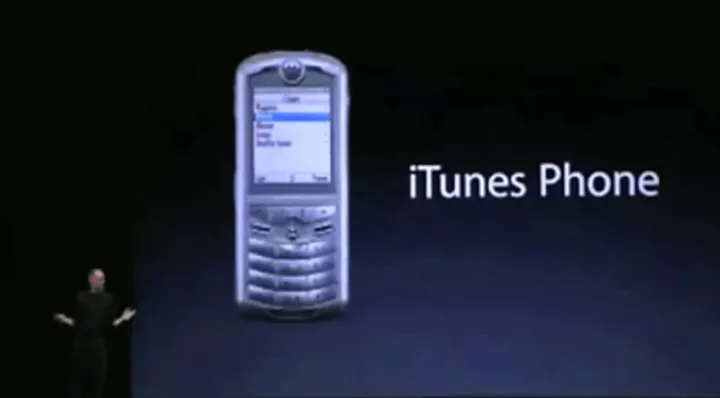
▲ iTunes Phone with Motorola Image from: CultofMac
So Apple found Motorola to implant the iTunes Store service into the Rokr, a compromise of sorts for Jobs.
In parallel, Apple software VP Scott Forstall has also formed a small team to develop the corresponding software for what is still Project Purple, the software.
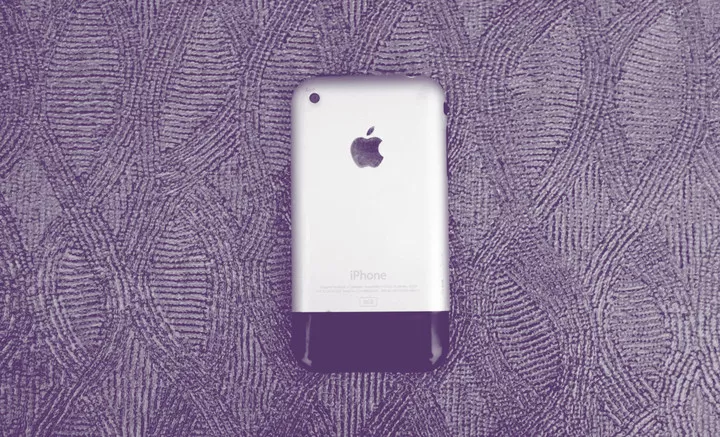
▲ Jobs loves purple Image from: dialoguereview
For the next few months, they would brief Jobs in a small room on the 2nd floor of Apple's headquarters, impress Jobs, and then present to other Apple executives.
In 2005, the Motorola Rokr performed rather poorly (https://www.penguinrandomhouse.com/books/223401/becoming-steve-jobs-by-brent-schlender-and-rick-tetzeli- with-a-new-foreword-by-marc-andreessen/), coupled with the Apple software team bringing very forward-thinking interaction ideas, allowed Jobs to push Project Purple forward.
You can see almost all of Apple's products in the iPhone
The multi-touch interaction led by the iPhone has actually existed within Apple for a long time, but it came about by accident when Apple engineer Brian Huppi solved the problem of not having a mouse to control the computer.
Initially, Jobs dismissed the idea, arguing that dropping the Mac's interface onto the trackpad would look clunky. And the trackpad was not elegant enough for the size of a desktop.

▲ Ten out of ten Ive's Leica T
On a side note, Ive switched gears and said that if this technology appeared on the back of the camera, the buttons on the back of the digital camera would be able to be removed so that a whole screen could be used.
The "multi-touch" technology that was eventually retained became the basis for what would eventually become iPhone interaction.
The idea of a whole screen on the back of the camera eventually appeared in the Leica T. The one-piece CNC cut, combined with the interaction logic of the whole screen, is the same as Ive's original idea.
Leica's designer Andreas Kaufmann also said in an interview that, as a fan of Ive's design style, he was just trying his best to emulate Jony Ive.
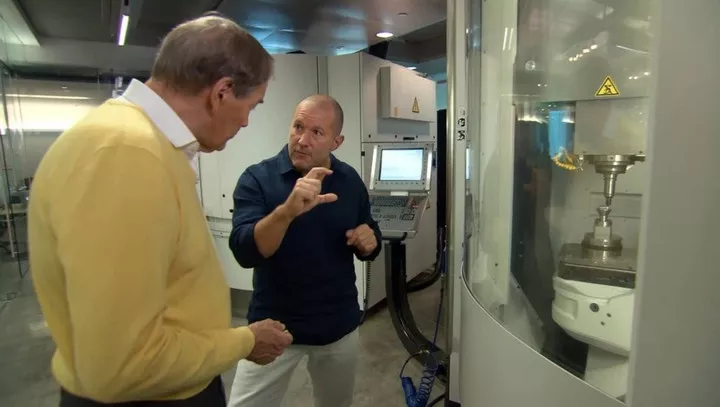
▲ Ive in Supervision Photo from: iMore
The Apple design team led by Jony Ive used to be one of the souls of Apple products. As an industrial designer, Ive has not only studied lines and curves.
Over the years he has also refined his and his team's understanding of industrial materials. Since 2004, he has been working to control the black streaks that occur in the manufacture of aluminum, even delving into the supply chain to learn how to dope a quantitative amount of magnesium and iron to maximize the original color and hardness of the aluminum.
After the release of the iPhone, Ive's design team became increasingly populated with materials experts, even acquiring Chicago-based QuesTek Innovations, which holds the patents for making the appropriate steel for racing cars and rockets.

For this reason, on the first Apple Watch, Apple also introduced three different materials in one breath, appearing in stainless steel and solid gold cases in addition to aluminum and magnesium.
The iPhone is the result of Steve Jobs' control of software and Ive's attention to detail in industrial design, but behind both of them is Tim Cook, the man who brought the iPhone from his desk on the second floor of Apple's headquarters to Apple Stores around the world.
In December 2006, on the eve of the iPhone launch, Ive traveled across the Pacific Ocean to Foxconn in Shenzhen, and in a conference room, selected thirty of the hundred or so pre-production iPhones to bring to the launch event.
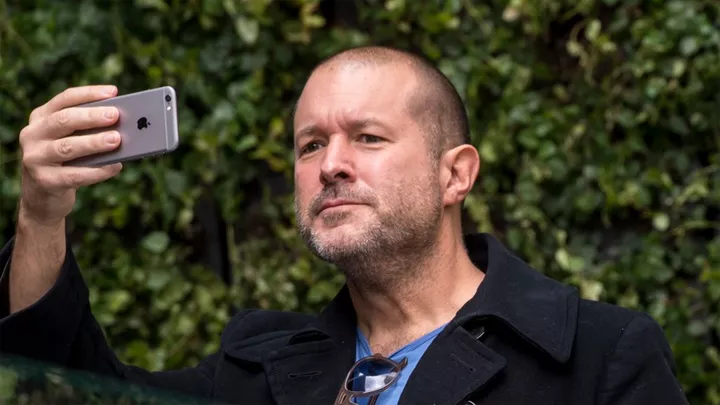
Nick Forlenza, Ive's vice president of design for turn and pass, said that any one of these could have gone to Jobs and they would have been as exquisite as a camera made by Canon.
Foxconn's production process gave Ive the confidence that Apple could build millions of equally sophisticated phones and he wouldn't have to travel thousands of miles to supervise the work.
Tim Cook, the man behind the iPhone
Tim Cook was famous for managing the supply chain at Compaq before joining Apple, and choosing Shenzhen Foxconn for OEM was also part of Tim Cook's job description.

Not only that, but early iPhones had a touch screen that wasn't glass but plastic, and Jobs happened to notice that it was easily scratched. So in the production version, the decision was made to use glass.
Then, Jobs called Corning, and the two companies hit it off, not only bringing strong glass to the iPhone, but also saving Corning.
But behind the scenes, it's not easy to take a technology that's never been mass-produced and produce enough glass in less than six months. Together with Corning, Cook has done the near-impossible by turning a glass factory in Kentucky into a manufacturer of iPhone screens, and on time for the first sale.

▲ Apple has subsequently continued to invest in Corning to develop new glass for it Image from: cnet
These jobs aren't as glamorous as the software engineers and industrial designers in the front office, and are secret jobs that are hard to see for the common man.
"His unseen work has become Apple's secret weapon."

For the 1984 Super Bowl finale, Apple aired the famous "1984" commercial, alluding to the Mac's challenge to old-time IBM to re-establish the PC.
The iPhone, released and launched in 2007, ushered in a new era of "smartphones" and a new digital lifestyle.
Reference.
On the Origin of the iPhone
Becoming Steve Jobs
After Steve: How Apple Became a Trillion-Dollar Company